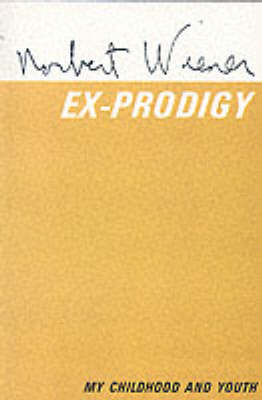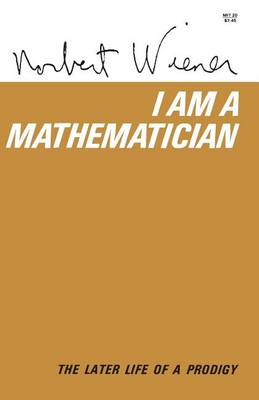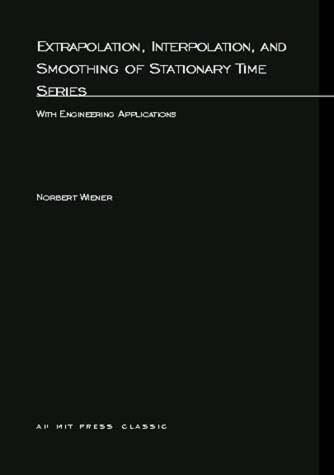The MIT Press
5 total works
A series of lectures on the role of nonlinear processes in physics, mathematics, electrical engineering, physiology, and communication theory. From the preface: "For some time I have been interested in a group of phenomena depending upon random processes. One the one hand, I have recorded the random shot effect as a suitable input for testing nonlinear circuits. On the other hand, for some of the work that Professor W. A. Rosenblith and I have been doing concerning the nature of the electroencephalogram, and in particular of the alpha rhythm, it has occurred to me to use the model of a system of random nonlinear oscillators excited by a random input.... At the beginning we had contemplated a series of only four or five lectures. My ideas developed pari passu with the course, and by the end of the term we found ourselves with a set of fifteen lectures. The last few of these were devoted to the application of my ideas to problems in the statistical mechanics of gases. This work is both new and tentative, and I found that I had to supplement my course by the writing over of these with the help of Professer Y. W. Lee. "
These two volumes (I Am Mathematician and Ex-Prodigy) comprise Norbert Wiener's autobiography. Sometimes with humor and sometimes with sadness, they render an account, without sentiment, of the life of the world-renowned mathematician and scientist. An unusual life story, Norbert Wiener's penetrating observations accompany the fascinating details describing the maturation of a major world scientist.
These two volumes (I Am Mathematician and Ex-Prodigy) comprise Norbert Wiener's autobiography. Sometimes with humor and sometimes with sadness, they render an account, without sentiment, of the life of the world-renowned mathematician and scientist. An unusual life story, Norbert Wiener's penetrating observations accompany the fascinating details describing the maturation of a major world scientist.
Extrapolation, Interpolation, and Smoothing of Stationary Time Series
by Norbert Wiener
Some predict that Norbert Wiener will be remembered for his Extrapolation long after Cybernetics is forgotten. Indeed, few computer science students would know today what cybernetics is all about, while every communication student knows what Wiener's filter is. The original work was circulated as a classified memorandum in 1942, because it was connected with sensitive wartime efforts to improve radar communication. This book became the basis for modern communication theory, by a scientist considered one of the founders of the field of artifical intelligence. Combining ideas from statistics and time-series analysis, Wiener used Gauss's method of shaping the characteristic of a detector to allow for the maximal recognition of signals in the presence of noise. This method came to be known as the "Wiener filter."




